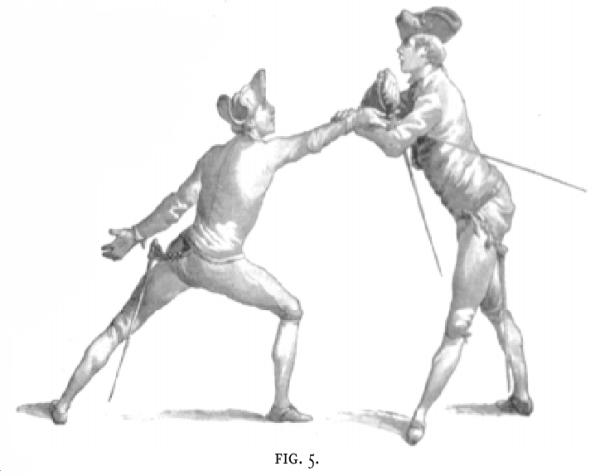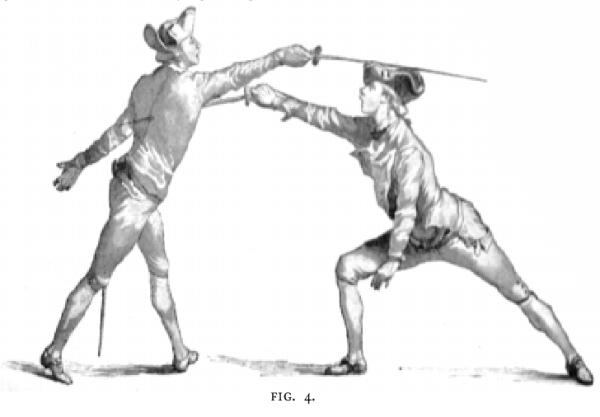Fencing, Old and New. *
As Typified by Angelo and Prévost.
Journal of Western Martial Art
April 2003
by H. A. Colmore Dunn
Originally published in Outing magazine, October, 1894, No. 25, p. 29-34.
After describing the usual method of retiring, by stepping back first with the left foot, followed by the right with a pace of equal length Angelo mentions the "pass," to which we shall briefly allude later, and then goes on to say that there is another method of breaking the measure, "ensautant de deux pieds en arrière;" but this method, although adopted by some, he says he would never counsel anyone to put in practice, "quesurun terrain extrémement uni." Now, oddly enough, it is precisely because the conditions are so different in the open from those in the fencing-room with its level boards that M. Jacob recommends the frequent use of "petite sauts en arrière" and even occasionally "en avant." If it be not an impertinence to adjust the scales between two such notable masters of dispatch, one would be inclined without hesitation to decide that the weights were in favor of the modern, and to regard the case as furnishing

